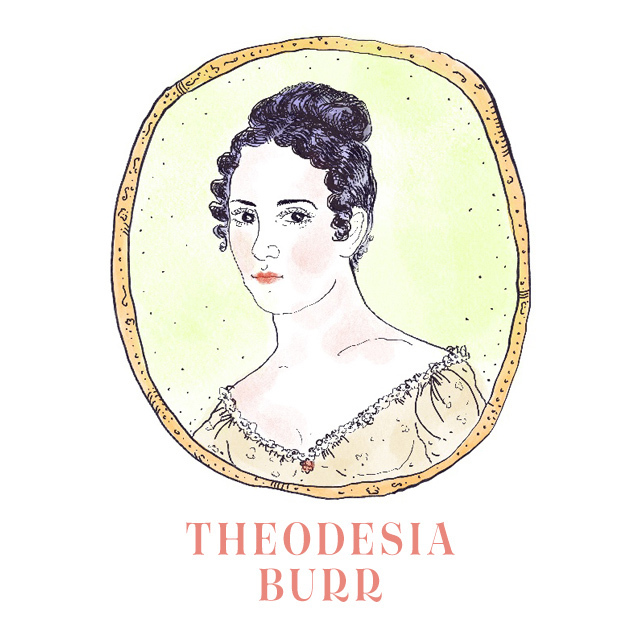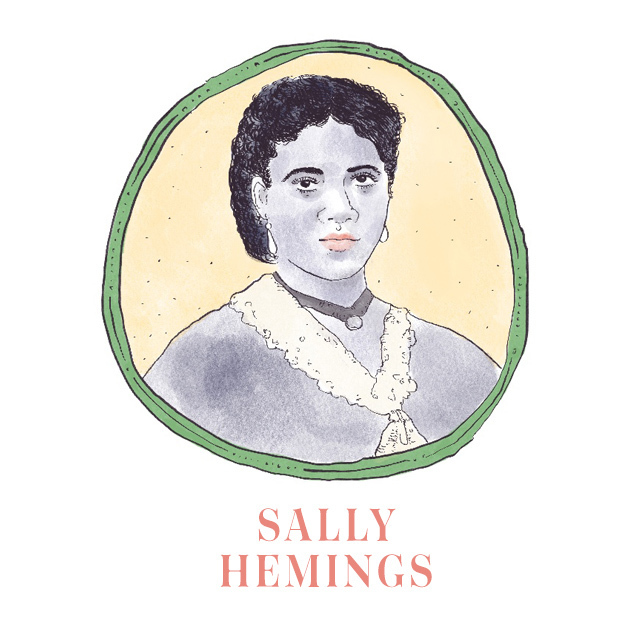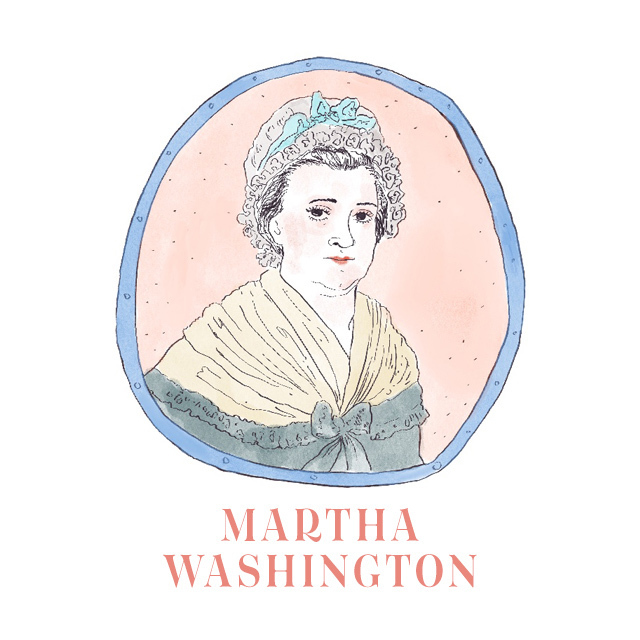Angelica, Eliza, and Peggy! Yeah, yeah. We all know the Schuyler Sisters. The trio even get their own song at the beginning of the hit Broadway show, Hamilton. Earlier this month, millions of viewers logged onto Disney+ to watch a 2015 recording of the famed musical, which follows the story of Alexander Hamilton all the way from his rise to success to his death at the hands of Aaron Burr. The release of the movie on Disney+ caused a resurgence in looking into the backgrounds of the historical figures depicted in the Lin-Manuel Miranda-penned production, from analyses of how the play romanticizes the founding fathers to mini-biographies on the three Schuyler sisters. Although refreshing to see a renewed focus on the historical women of a male-dominated musical, we couldn’t help but note that there has been little to no mention of the other women who are portrayed or referenced in the production. Where are all the profiles on Maria Reynolds? Investigations of the disappearance of Theodosia Burr? Facts and figures on Martha Washington? Don’t worry, we have you covered:

jasmine cephas jones as maria reynolds fancam for the tl pic.twitter.com/PQyTA1jINg
— rose (@KYDlSM) July 4, 2020
The only named woman character in the show aside from the Schuyler Sisters, Maria Reynolds, is one half of the first recorded sex scandal in American political history. The daughter of a merchant from New York, Reynolds first encountered Hamilton in Philadelphia when she was 23 years old while seeking help after being abandoned by her abusive husband, James Reynolds. Both the musical and most records depict Maria as a seductress, luring Hamilton into sleeping with her despite the fact that he had been married to Eliza for eleven years at the time. In our humble opinion, Hamilton was a grown-ass man who likely knew very well what he was getting himself into, but I digress.
just watched hamilton on Disney+ and the best scene is still him cheating w that bad bitch maria reynolds whew
— saifa (@cyphuhhh) July 4, 2020
Reynolds and Hamilton had an affair for the larger part of the summer of 1791 until her husband found out and, in turn, blackmailed Hamilton in exchange for staying quiet on the matter. James Reynolds was supposedly paid $1,000 for Maria and Hamilton to continue the affair without interference. Of course, if you watched the musical, Reynolds didn’t exactly keep his promise and Hamilton later had to expose himself for sleeping with Maria before someone else could do it first. This is what we know as the Reynolds Pamphlets. While that is where both the musical and history seem to stop caring about whatever happened to Maria Reynolds, that is certainly not where her story ended.
Reynolds went on to get a divorce from her con artist, abusive husband. Who was her lawyer on the case, you might ask? Aaron Burr. You really can’t make this stuff up. Anyway, after enlisting the help of Hamilton’s arch-nemesis, she successfully divorced James Reynolds in 1793 and married his best friend and partner in crime, Jacob Clingman. While that marriage didn’t quite work out either, she eventually married a man named Dr. Matthew whom she spent the rest of her life with. She reportedly put her past behind her and “enjoyed the love and good will of all who knew her” until her death in 1828. Okay, character development!
Hamilton fun fact:
You know that cheating scandal!? Well, Maria Reynolds ended up divorcing from her husband soon after the scandal with Alex went live. And guess who represented her as her lawyer?! AARON BURRRRRRRR! #hamifilm pic.twitter.com/PPVSFgOFHV— Sheli Báez (@SheliBaezVO) July 3, 2020

In the musical, we first learn about Theodosia Burr following Hamilton and Eliza’s wedding. Stating “love doesn’t discriminate between the sinners and the saints,” Burr sings about how he has begun an affair with a woman named Theodosia, the wife of an English soldier. Although we never see Theodosia and Burr together in the show, the story of their romance is entirely true.
Theodosia Bartow was married to British army soldier James Marcus Pervost, who was called to duty in the colonies for the Revolutionary War. It was during this time that Theodosia was able to begin an affair with the young, rebel army officer Aaron Burr (who was 10 years her junior). Theodosia was extraordinarily educated and well read for the times, and it seems as though she was extraordinarily kind, welcoming, and fun as well. While her husband was off serving, Theodosia housed a number of Patriot officers fighting in the revolution in her home. While they stayed with her she would host impromptu poetry writing contests and heated evening debates on politics and philosophy.
I want a musical about Theodosia Bartow Prevost March 3, 2017
Some of the guests Theodosia welcomed into her home were George Washington, James Monroe, Marquis de Lafayette and yup, you guessed it, Alexander Hamilton. But that’s besides the point. This is likely the same way she met her lover, Aaron Burr, whom she began a years long affair with until her husband ultimately died in 1781 while on duty in Jamaica. Burr and Theodosia were married in 1782.
It has been a little while since I posted on here and I apologize, but I am now a married man to Theodosia Bartow Prevost and a father to our wonderful daughter Theodosia. The 1780’s are looking great! #blessed #familyfirst
— Aaron Burr (@AaronBurrPrezz) January 3, 2020
Theodosia and Burr went on to have four children together although only one of them, Theodosia Burr, would survive. Unfortunately, Theodosia herself passed away a little over 10 years after their marriage in 1794 of stomach cancer. Burr never married again.
While Theodosia Burr’s life was short, she still made an impact. She and Burr are often described as America’s first feminists. Theodosia was extremely passionate about women’s rights and a follower of English writer Mary Wollstonecraft, who authored A Vindication on Women’s Rights. She even inspired Burr to start a school in New York City for both young men and young women while on her deathbed.
If you thought the death of Theodosia Burr I was tragic, then buckle up. Theodosia Burr II, later Theodosia Alston, was the only surviving child of Theodosia and Aaron Burr. There’s an entire song dedicated to her in the Hamilton musical titled “Dear Theodosia,” in which Burr expresses his love and admiration for his daughter.
Dear Theodosia is such a beautiful song ???
People don’t talk about it a lot but it definitely deserves a lot of love!! This song shows that although Burr & Hamilton are polar opposites, at their core they aren’t that different after all. pic.twitter.com/0Of6fOxdAO
— Kahlil Alcomendras (@ihipnghangin) July 4, 2020
Like her mother, Theodosia was extraordinarily educated for the times. Rather than learning about how to serve the home as a child, she was taught French, music, dancing, arithmetic, and English composition. She could speak English, Latin, French, and Greek by the age of 12. After her mother died when she was 10, she was essentially her father’s best friend. Theodosia was put in charge of hosting events and guests at their estate in Greenwich Village, where she hosted many prominent political figures from the times including—no surprises here—Alexander Hamilton.
Theodosia married Joseph Alston in 1801, who was a Southern aristocrat and, unfortunately, heir to a rice plantation. While Alston was certainly charming, some presume that part of the reason she married him was to help her father’s financial situation, which was on the decline at the time of her marriage. Theodosia and Alston eventually had a son whom she named after her father. Unfortunately, she had a difficult labor which left her dealing with chronic illness for the rest of her life.
Theodosia stood by her father through all of his controversies, including his fateful duel with Hamilton and, later, when he was charged with treason for plotting to help western states secede, hoping to become the emperor or whatever new nation was founded. In 1812, when the United States was once again at war with Great Britain, Burr convinced his daughter to take a trip up from her home in South Carolina to where he was residing in New York. Although her husband was reluctant to have her go because of the ongoing battles taking place, she went anyway. Sailing on a ship called The Patriot, all traces of Theodosia Alston disappeared before she ever made it to New York. While Burr was convinced that the ship was lost at sea in a storm, it is far more likely that her ship ran into pirates while sailing around the Outer Banks. Burr sent search parties to Nassau and Bermuda to look for her, but nothing was ever found. Her death and disappearance is still largely a mystery.
Where is the Theodosia stan community? Where are the Theodosia biographies?!
According to my sources (Wikipedia) Theodosia Bartow Prevost was some badass francophile feminist and then Theodosia Burr was casually LOST AT SEA?!I am riveted
WILL THEY TELL YOUR STORY?!— Valentina Monte (@ValentinaMonte) July 7, 2020
Bonus Round
These next three ladies appeared in Hamilton in several blink-and-you’ll-miss-it moments, but that doesn’t mean they’re any less important. While all three of them were reduced to one-liners, they each have their own complex histories that played a huge role in the lives of the people who are actually depicted in the musical.

Today I learned that Sally Hemings was between the ages of 14 and 16 at the time she (purportedly) had her first sexual encounter with Thomas Jefferson, who was 30 years older, between 44 and 46.
She gave birth to the first child at age 16 shortly after returning from France. pic.twitter.com/NL8BQ1PGe9
— c0nc0rdance (@c0nc0rdance) July 7, 2020
“There’s a letter on my desk from the President. Haven’t even put my bags down yet, Sally be a lamb, darlin’, won’t cha open it?” These lyrics from “What Did I Miss?,” Thomas Jefferson’s introduction into Hamilton, are very easy to miss. In fact, some hardcore Hamilton stans didn’t even notice it until the recorded version of the play was released. Since, fans have begun to address the fact that Sally Hemings, an extremely complex individual with a significant history, was used as a throwaway line.
For years the relationship between Jefferson and Sally Hemings, an enslaved woman at Jefferson’s Monticello Estate, was portrayed as consensual. What your history books forget to mention, however, was that Hemings was just 14 years old when Jefferson took her as his companion to Paris and she was without a doubt a victim of sexual assault. She ended up having six children by Jefferson, and her descendents are still alive today.
In recent years, historians have begun to correct what was written throughout history on Hemings for so long, with the Monticello Estate even addressing the issue and exposing Jefferson for the predator and all around bad person he was. While Hemings’ shout-out in Hamilton is lacking to say the least, there are thankfully books that tell her story in a way she deserves.
The family and I watched Hamilton last night, and today I can’t stop thinking about Sally Hemmings.
What are your book recommendations for reading about Hemmings—biography or historical fiction?
— Jessica Salfia (@jessica_salfia) July 7, 2020

Burr: “Martha Washington named her feral tomcat after him.”
Hamilton: “That’s true.” pic.twitter.com/85nOHSd4fL— British Siri ☎️ (@bungalowwriter) July 9, 2020
“Martha Washington named her feral tomcat after him.” This line in “A Winter’s Ball” references George Washington’s wife, Martha, who did, in fact, name her cat after Alexander Hamilton. This is the only time Martha is referenced directly in the musical, but if we’re being realistic, she should have probably been out and about in the background for the entirety of the musical as she was present at her husband’s encampments for much of the Revolutionary War.
Martha was the nation’s first ever First Lady, and was therefore responsible for setting the precedent for what the duties of the First Lady would be. And while she deserves no gold stars for being complicit in the enslaving of nearly 123 people at her and Washington’s Mount Vernon Estate, she did free all of Washington’s slaves following his death in 1801.
Martha Washington’s ankle boots. Just imagining her clip cloppin’ around. pic.twitter.com/wFFiBiQuHS
— Carey O’Donnell (@ecareyo) July 4, 2020

And last but not least, we have Betsy Ross, the final female historical figure who gets a second in the spotlight in Hamilton. “How did we emerge victorious from the quagmire? Leave the battlefield raising Betsy Ross’s flag higher?” Burr sings in “Guns and Ships.”
The famous upholsterer was just 24 years old when she created the flag that would be flown by Patriots during and following the Revolutionary War. According to history, the red stands for valor, the white for purity, and the blue for perseverance and justice. The circle of stars denotes for the 13 original colonies that made up the United States. While there isn’t a lot of recorded history behind why Ross was chosen to create the nation’s first flag, some suppose that it was largely in part due to her being a nice lady who sat next to George Washington at church who sewed his buttons back on his coat when they would fall off.
Betsy Ross Flag. pic.twitter.com/SdH4hQm0gu
— Ospcol (@Ospcol) July 9, 2020
Story art: Gabriella Shery is an illustrator, graphic designer, and comic artist from Brooklyn, New York. You can find her work on Instagram at @gabshery, or on her website at gabriellashery.com
MORE FROM BUST
The Real Story Of The Schuyler Sisters
In Honor Of Hulu’s “The Great,” Here Are Some Other Women In History We’d Love To See Onscreen


